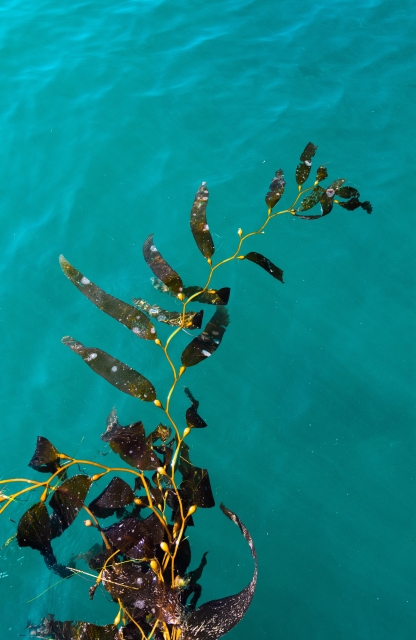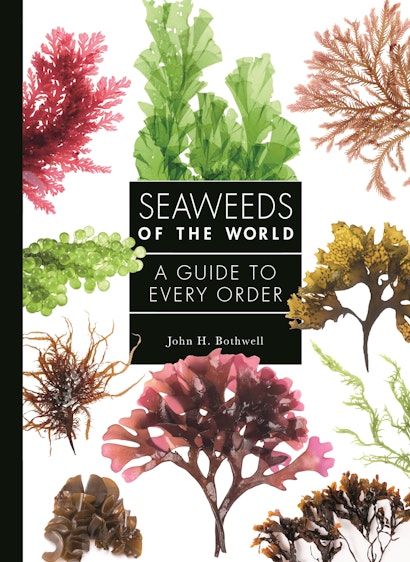The Polynesian island of Funafuti sits in the middle of the cobalt-blue Pacific, 2,000 miles north of New Zealand. Funafuti is an atoll, a Polynesian word for a ring-shaped island whose sands are built not from rock but from the weathered skeletons of the animals that form coral reefs. At its heart sits the Te Namo lagoon, bounded by dazzling white beaches that roll down to the shallow waters of the reefs. The reefs themselves are surrounded by small, lobed seaweeds from the Halimeda genus, which look like miniature prickly pears and whose name comes from the Greek for ‘guardian of the sea.’
Funafuti is such a perfect example of an atoll that, over 120 years ago, the Royal Geographical Society chose it as a study site on which to investigate theories of coral island formation. The delightfully named HMS Penguin duly set sail on the 1st May 1896, and its band of naturalists, artists and surveyors sparked the first in a series of investigations that continue to this day to shed light on the processes that drive coral island creation.
The results were surprising. The otherwise unremarkable Halimeda turned out to have a formidable secret. Halimeda is one of several species of what we now call the calcifying seaweeds, which combine the calcium and carbon dioxide in seawater to make calcium carbonate or, as we more commonly call it, chalk. This calcification allows the seaweed to construct a tough supportive and protective scaffold, effectively turning Halimeda into a plant that can make itself a shell. When Halimeda dies, that shell crumbles into the soft white sand of the atoll. The perfect coral atoll of Funafuti turned out to be not quite so perfectly coralline after all, owing its existence as much to the Halimeda that stands guard over the reefs as to the reefs themselves. Funafuti is, quite literally, an island that is built from seaweed.
But most of us will never be lucky enough to visit the islands of the South Pacific. Why, then, should we be interested in a faraway land built out of seaweeds? The answer is that that’s exactly what our world is: seaweeds didn’t just build Funafuti atoll—they built much of the rest of our planet as well.
To understand how they did that, we must first remember that when we want to make seaweeds sound more scientific, we call them ‘macroalgae’ (literally, the ‘long algae’). The algae are one of life’s most diverse and least appreciated groups, and their rise—and the story of how seaweeds evolved within them—offer a key with which to unlock some of life’s most intricate secrets.
If we want to uncover those secrets, we need to head back into the deep time of early Earth. Our planet is around five billion years old, and simple microbial life appeared relatively quickly, perhaps a little under four billion years ago. For the next billion years, our microbial forebears survived on molecular scraps, teasing energy out of the chemistry and heat of a young, cooling planet. But around three billion years ago, life embraced one of its most astonishing biochemical breakthroughs: photosynthesis or, literally, ‘making things from light’. Photosynthesis allowed its possessors to build and power themselves from the very simplest of ingredients: the water they grew in, the carbon dioxide dissolved in that water, and the sun that shone down upon them. These early photosynthetic microbes were the first algae, and (with the usual few exceptions from which biology can never wriggle free) their descendants define the algae today: photosynthetic organisms that live out their lives in water.
Photosynthesis gave the algae such a huge advantage that they rapidly swept across the face of the oceans. But they did more than spread through the world’s waters: they also changed its atmosphere. One of the by-products of photosynthesis is oxygen. Oxygen is so common now that we often take it for granted, but oxygen is an extremely reactive gas. This, incidentally, is precisely the reason why we need to keep breathing it: we need something to burn up our food so that we can extract its energy, and oxygen is reactive enough to do that. Oxygen’s reactivity makes it hard for atmospheric oxygen to build up (because it keeps reacting with things), but somewhere between two and three billion years ago, the algae had grown to such vast numbers that their photosynthesis pumped out enough oxygen to reshape the world’s atmosphere. Thankfully for us, they have helped to maintain that oxygen-rich atmosphere ever since.
These early algae were single-celled, but for reasons that we still don’t fully understand, the pressures of algal life sometimes drove these single-celled microalgae together into colonies and, eventually, into multicellular forms. These many-celled algae—the first true seaweeds—appear a little over one billion years ago and divided early into two of today’s three major seaweed groups: the red seaweeds, whose earliest known representative is the billion-year old fossil Bangiomorpha, and the green seaweeds, represented by the billion-year old fossil Proterocladus. For around half a billion more years, the red and green seaweeds grew and diversified in the oceans until, after the twists and turns in which evolution delights, they were joined by the third of today’s major groups, the brown seaweeds. By this time, the rains had been eroding the land for the better part of four and a half billion years, creating nutrient-rich sediments that flowed from the land into the sea. To take advantage of such a rich source of nutrients, one branch of the green seaweeds made its way onto land, evolving roots, shoots, seeds and flowers and becoming the land plants that have supported terrestrial life ever since.
So, seaweeds shaped our atmosphere, filled our oceans, and colonised the land. They’ve done more than enough to earn our gratitude, but they still have gifts to give. Our over-enthusiastic burning of fossil fuels has left us deep in carbon debt, and the pressures of intensive agriculture have left many of the world’s soils depleted. But two thirds of the surface of our planet is covered by water, and today’s seaweeds contain a wealth of untapped potential. The brown seaweeds have evolved into the robust wracks and kelps that cover much of the rocky northern shorelines and which are eyed enviously by biofuel prospectors, the reds have diversified into a sumptuous host of beautiful and delicate species that are eaten by coastal communities worldwide, and the greens flourish in the upper intertidal, easing the biological transition from land to water.
The seaweeds still have much to offer us and a surprising amount to teach us. I hope you now feel slightly better disposed towards the slimy fronds that we scramble over on the beach, and if you ever are unlucky enough to bark your shins after slipping on them, please forgive them and remember that we cannot understand our seas—and the world they support—without understanding our seaweeds.
John H. Bothwell is a phycologist in the Department of Biosciences at Durham University. He has studied seaweeds in the North Atlantic, North Pacific, and Indian oceans for more than twenty years, and his group published both the first description of a brown seaweed sex chromosome and the first genome sequence of a green seaweed.

